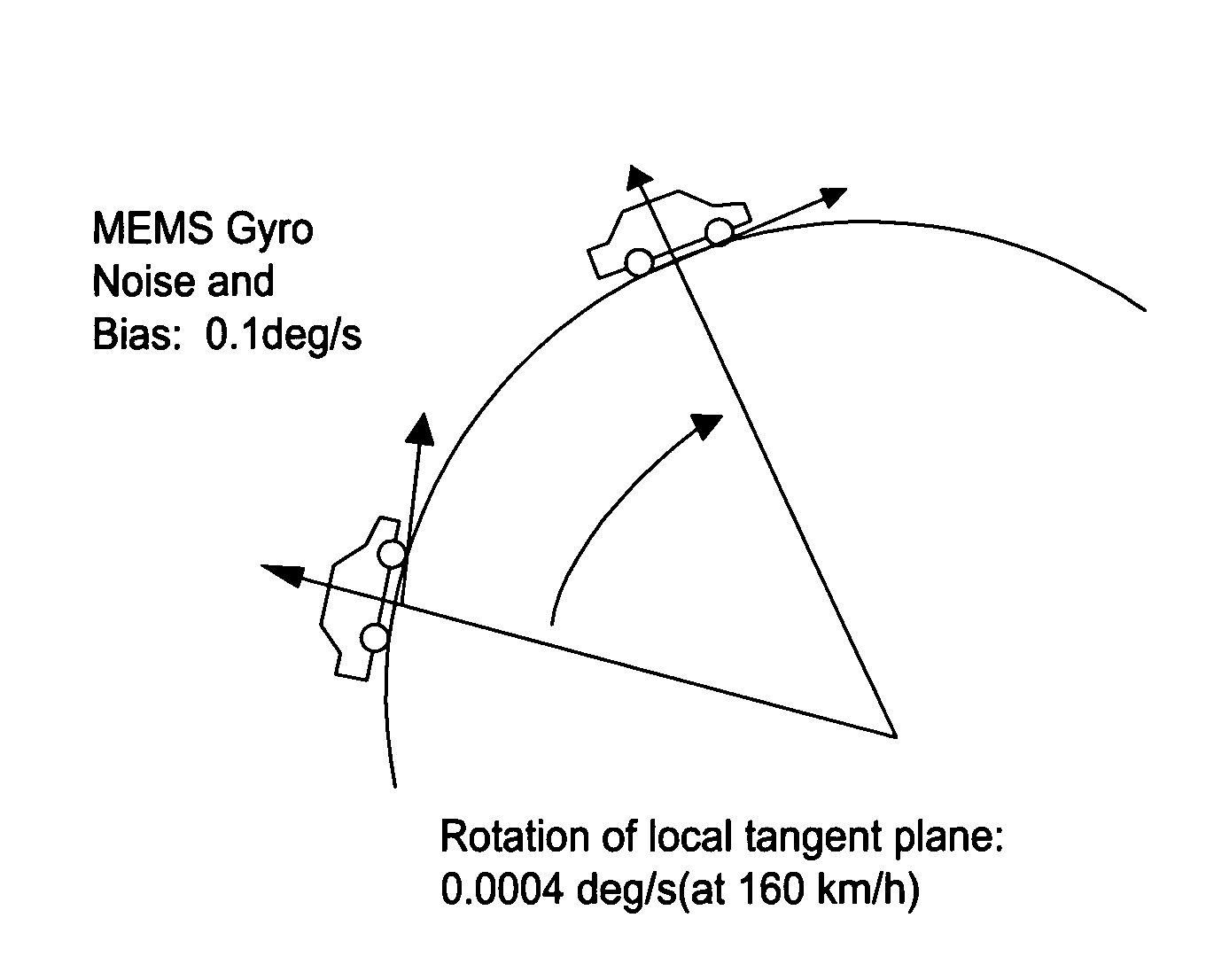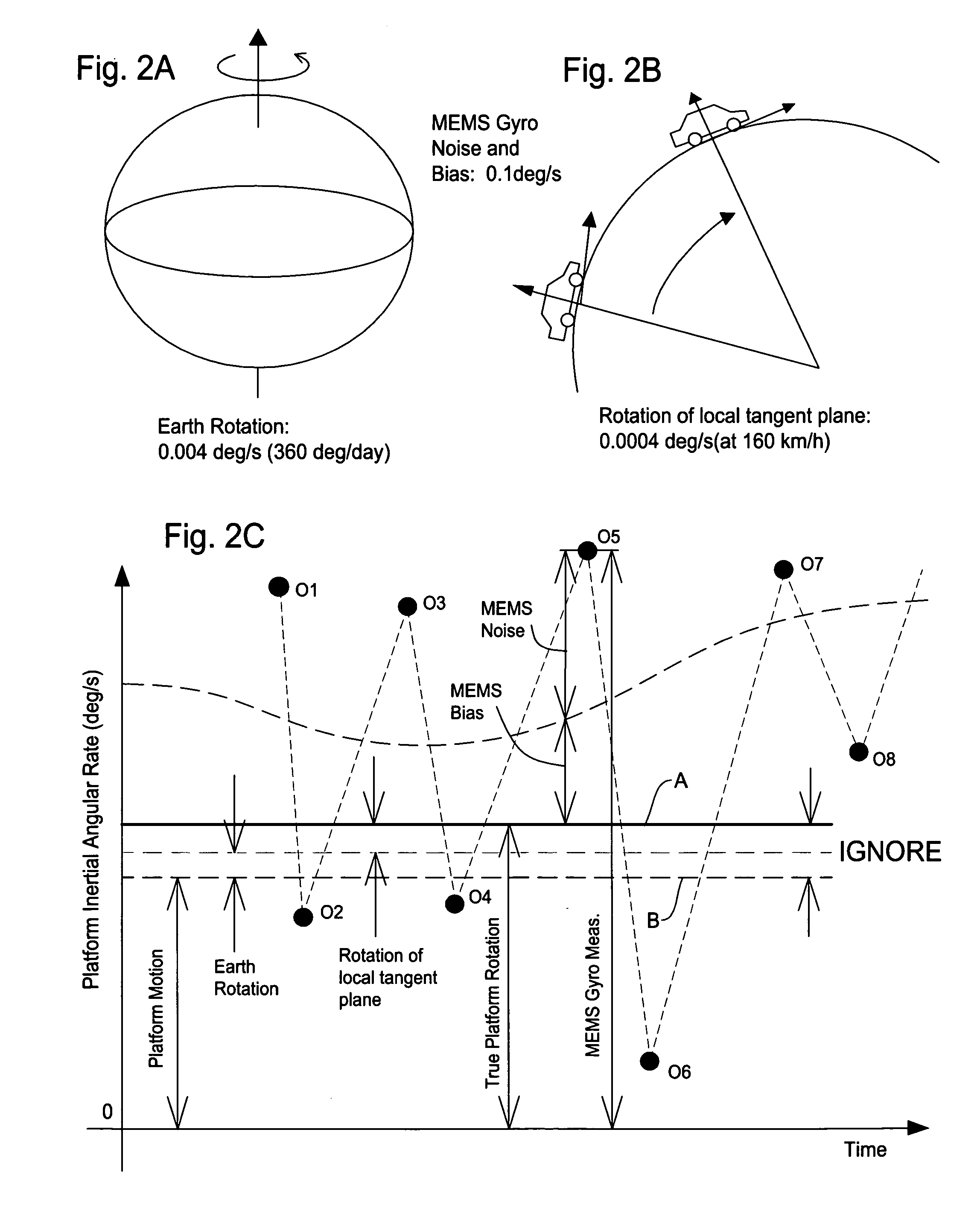Computational scheme for MEMS inertial navigation systemes
a navigation system and inertial sensor technology, applied in wave based measurement systems, navigation instruments, instruments, etc., can solve the problems of increasing inaccuracy, inability to provide high accuracy at long ranges, and increasing inaccuracy, so as to ensure stability, low cost, and low cost
- Summary
- Abstract
- Description
- Claims
- Application Information
AI Technical Summary
Benefits of technology
Problems solved by technology
Method used
Image
Examples
Embodiment Construction
[0024]The present invention will be described in detail with reference to the accompanying drawings. The method and apparatus of the present invention takes advantages of the conditions featured in the platform dynamics and low-precision MEMS sensor performance. It should be noted that although a road vehicle is mainly used in the following description, the present invention can be advantageously implemented to other types of vehicles such as vessels, commercial aircrafts, etc.
[0025]To compute platform (vehicle) three-dimensional position, the conventional precision method tracks latitude φ, longitude λ, and altitude h by numerically integrate their time derivatives at a high frequency. The time derivatives of latitude φ is the functions of velocity vN, Earth North-South radius of curvature RN, longitude λ, and altitude h, while the time derivatives of longitude λ is the functions of velocity vE, Earth East-West radius of curvature RE, latitude φ, and altitude h. The time derivative...
PUM
 Login to View More
Login to View More Abstract
Description
Claims
Application Information
 Login to View More
Login to View More - R&D
- Intellectual Property
- Life Sciences
- Materials
- Tech Scout
- Unparalleled Data Quality
- Higher Quality Content
- 60% Fewer Hallucinations
Browse by: Latest US Patents, China's latest patents, Technical Efficacy Thesaurus, Application Domain, Technology Topic, Popular Technical Reports.
© 2025 PatSnap. All rights reserved.Legal|Privacy policy|Modern Slavery Act Transparency Statement|Sitemap|About US| Contact US: help@patsnap.com



